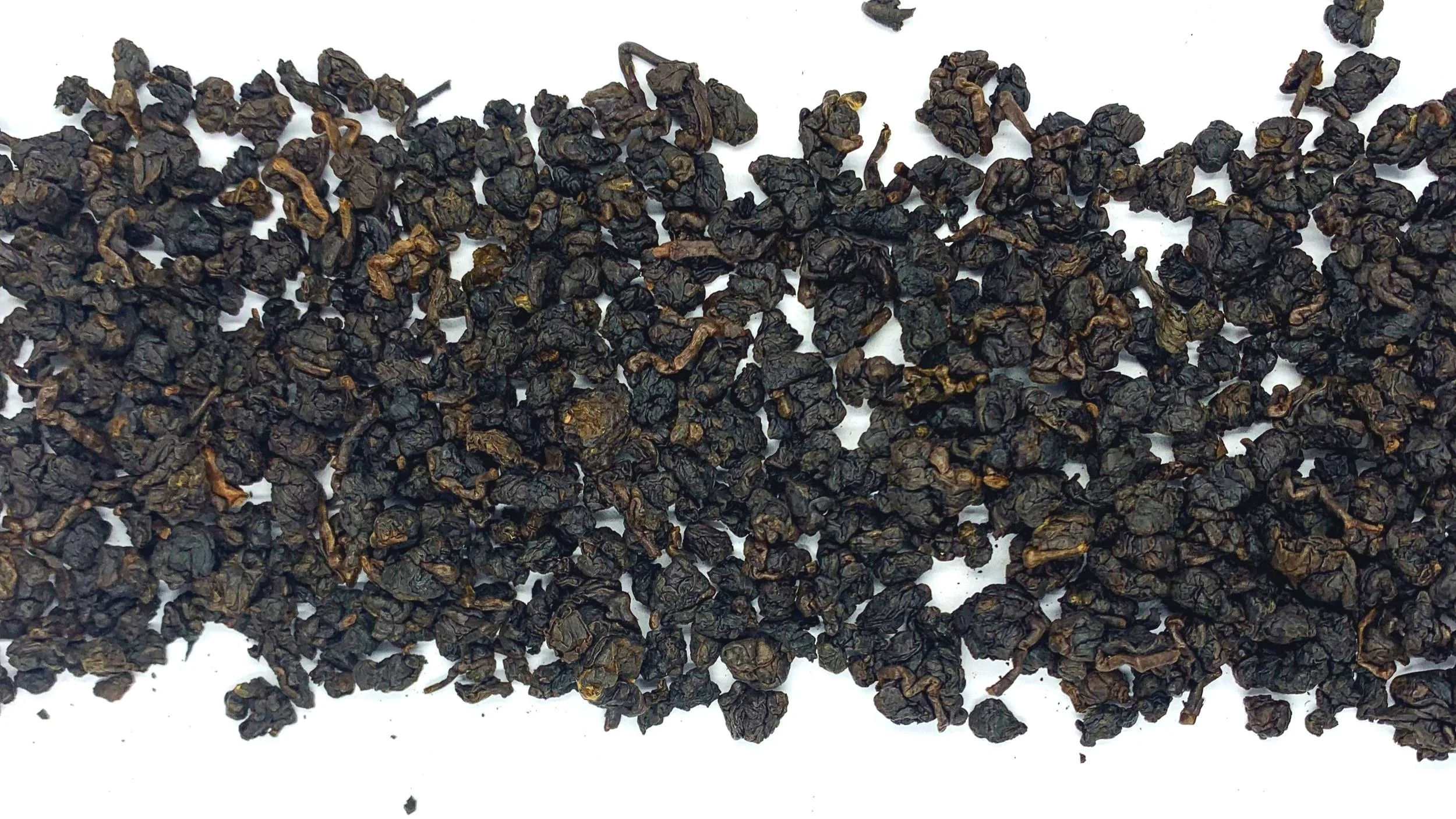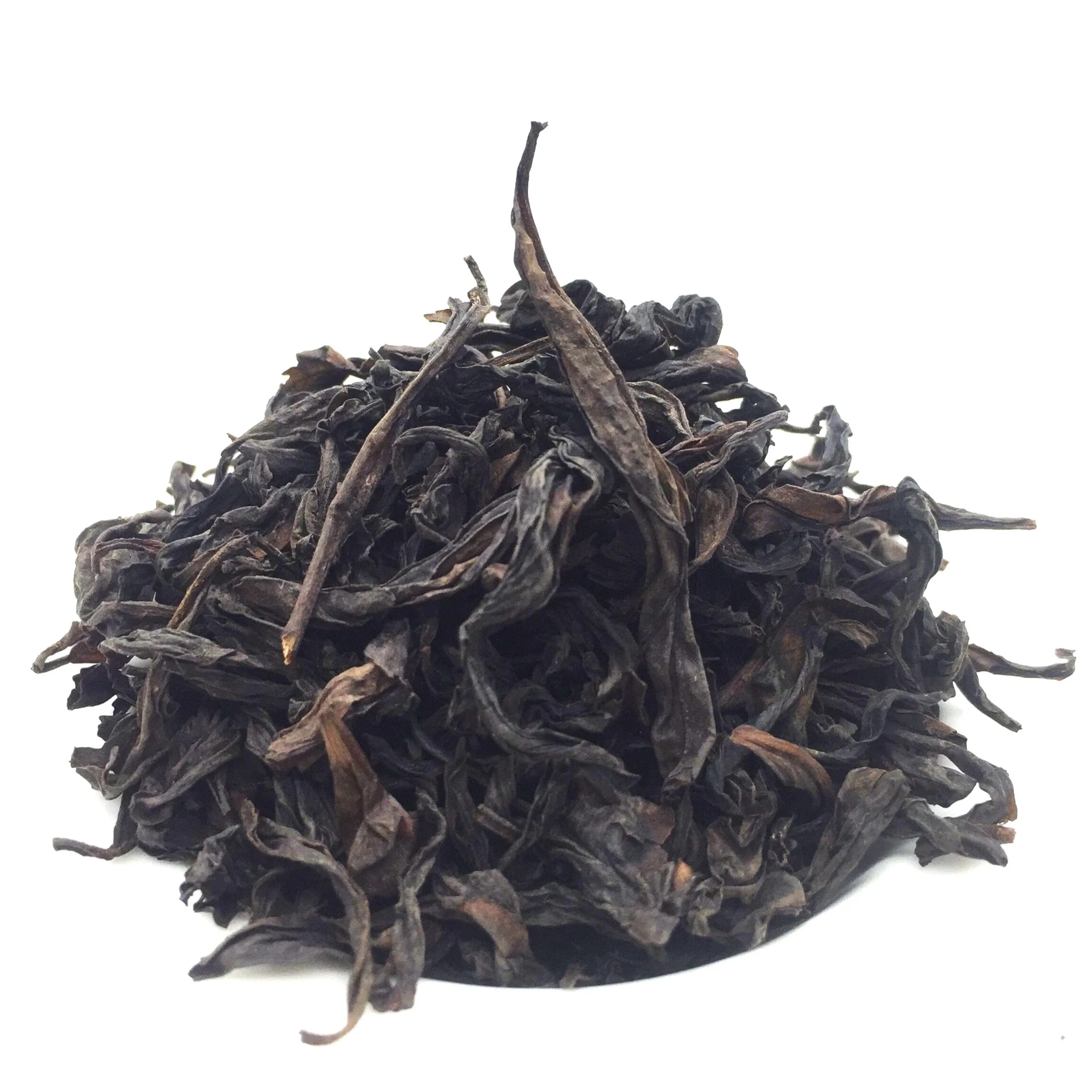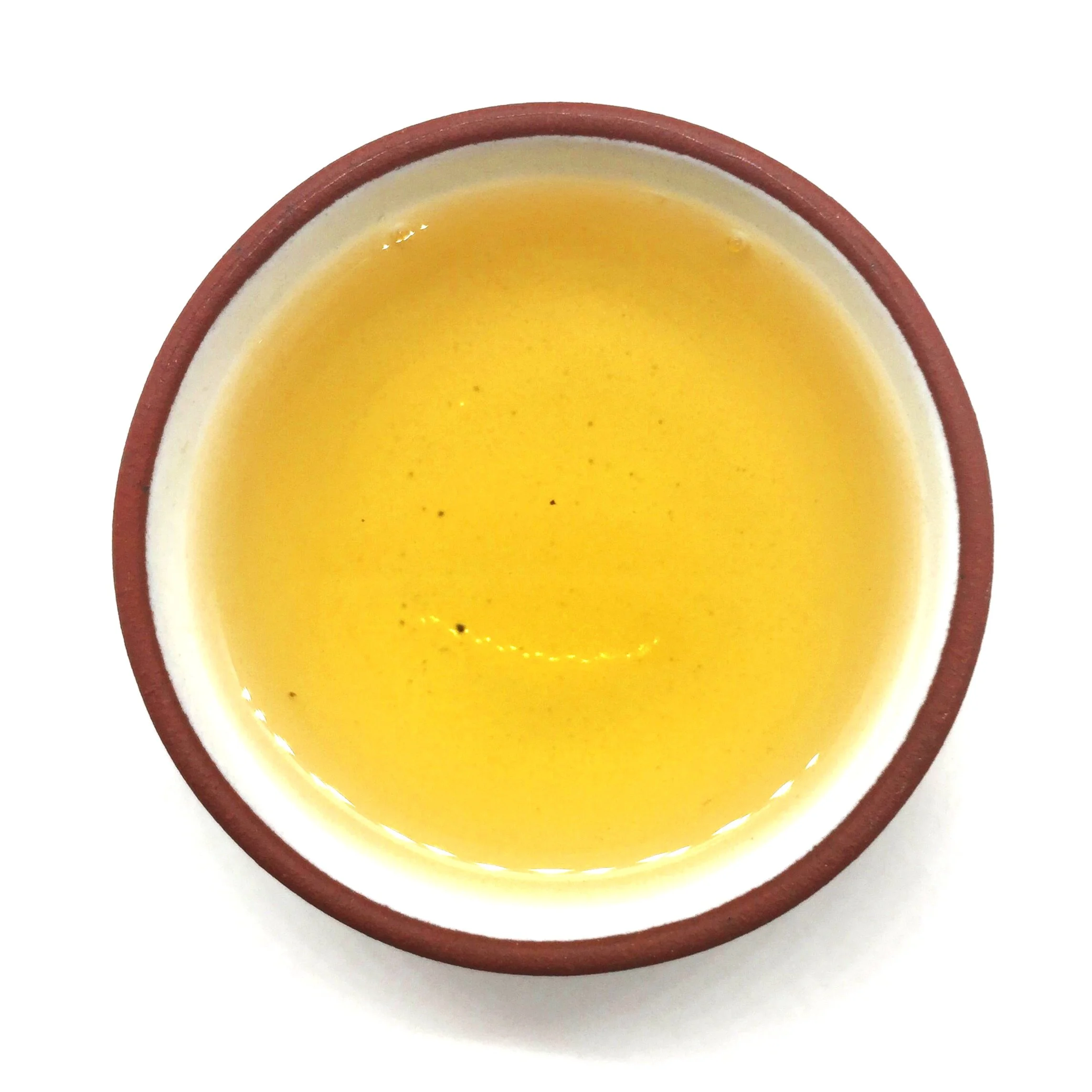Stone Milk
Stone Milk
Literally meaning “Stone Milk”, Yan Ru is an older and somewhat rare variety of Rock Oolong (or Yan Cha) tea. It has a distinctly creamy mouth-feeling and taste, from which it gets its name. Its character is both subtle and complex, with surprisingly sweet-spice flavors on top of a distinctly granite backbone.
Teas from Wuyishan are highly sought after; the pristine and mineral-rich soil in which they grow, as well as the rich artisanal tradition which has developed around their crafting and consumption has led them to be considered one of China’s most famous teas. Because of the aggressive roasting that goes into creating these teas, it is best to let them rest for at least one year before consuming them. These teas may also be aged in dark and dry conditions in order to improve their flavor.
Origin - Wuyishan, Fujian, China
Harvest - 4/28/2021
Location - Cheng Dun 程墩, Zhengyan Area, Wuyi Mountain Scenic Area
Roast Level - 3 times, medium roast
Tastes Like - Lactic, Granite, Cloves
Sold in one ounce increments
The Name “Stone Milk”
Yan Ru (岩乳), meaning “Rock Milk” or “Cliff Milk,” is widely known in China as Shi Ru (石乳), “shi” (石) being another word meaning “rock” or “stone.” Stone Milk was so popular in ancient times that the name was practically synonymous with “Yan Cha.” The name “Stone Milk” suggests a tea containing the “essence of the rocks.” In the Ming and Qing Dynasties, Stone Milk was the most widely known name in rock teas, similar to how Da Hong Pao is today.
“Shi/Yan Ru” (石乳): a Tribute Tea
Stone Milk tea has a long history with the earliest records dating back to the Southern Song Dynasty. It is said that Stone Milk was created in the Tang Dynasty, became famous in the Song Dynasty, and flourished in the Yuan Dynasty. Famous Song Dynasty writer Gu Wenjian’s (顾文荐) book “Miscellaneous Records and Rankings of Tea Products” (负喧杂录·建茶品第) records: “又一种茶,聚生石崖,枝叶尤茂。至道初,有诏造之,别号石乳.” This passage means that the second emperor of the Song Dynasty, Song Taizong Zhao Kuangyi issued a decree in the Zhidao year (995-997), ordering the Fujian trans-shipment envoy to produce Stone Milk (Shi Ru 石乳) tea to pay tribute.
Shi/Yan Ru was one of the teas the emperor of the Song Dynasty of China drank. It was said of the famous Beiyuan Tribute Teas (北苑贡茶) of the Song Dynasty, “Dragon tea, Phoenix tea, and Shi Ru tea, are the top-grade imperial teas (上品御茶).” In the Yuan Dynasty Stone Milk tea was grown in the Wuyi Imperial Tea Garden (武夷御茶园), and the procedure of “three pours of Stone Milk” (三斟石乳) became a part of respected art of Wuyi Tea Ceremony. Today Stone Milk is still considered a great Wuyi Rock Tea, however it no longer has the fame that it once did and has become relatively rare and in low supply. Still, tea enthusiasts who visit the Wuyi Mountains can find traces of its history, such as among the rock carvings on Jiu Long Jian’s (九龙涧) cliffs (a famous Wuyi tea growing region) where one can find the words “Stone Milk Tea Leaf Fragrance” (石乳留香) carved into the side of a cliff.
Wuyi Mountain Region
The Wuyi Mountains are located at the junction of Jiangxi and Northwest Fujian provinces in China. The region has a mild climate with an average temperature of 18-18.5°C, a long frost-free period, high humidity, and abundant rainfall. The mountains are shrouded in mist and fog all year round.
The most famous production area is the Zhengyan Mountain area (正岩茶区) which is located within the Wuyi Mountain Scenic Area (武夷山旅游风景区内). Since ancient times, the best tea of Wuyi has been said to come from the Zhengyan region. Particularly, the Zhengyan tea coming from the “Three Pits and Two streams” (三坑两涧) region is said to be the highest quality tea and includes tea from many high-altitude locations. The “Three Pits” are Hui Yuan Keng (慧苑坑), Nui Lan Keng (牛栏坑), Da Keng Kou (大坑口) while the “Two Streams” are Liu Xiang Jian (流香涧), and Wu Yuan Jian (悟源涧). The soil in the Zhengyan area contains a lot of sand and gravel creating soil with high permeability. The soil has high potassium and manganese content and moderate acidity. Here the daily temperature variation is small and the area is protected from cold winter winds.
Teas that are produced in the Bi Shi Yan (碧石岩), Ma Tou Yan (马头岩), Shi Zi Kou (狮子口), and Jiu Qu Xi (九曲溪) areas are usually known as Ban Yan Cha (半岩茶), literally meaning “half rock tea.” The tea from the Ban Yan region is lower altitude and not as sought-after as the Zhengyan tea. The soil in the Ban Yan region has low potassium content, high aluminum content, and high acidity.
Yan Yun 嚴韵
A signature feature of Wuyi Rock Tea is Yan Yun (嚴韵) which is often translated as “rock rhyme” or “mountain rhythm,” but perhaps is best understood as the essence of the tea. Often associated with the tea’s taste, it might be best thought of in a classical Chinese sense as the tea drinker’s experience of the tea as a sort of resonance with the mountains from which it came. Therefore it is more related to terroir than to characteristics resulting from processing or the tea variety itself, although of course one cannot be separated from the joint influence of all of these factors.
The origin of the term comes from a poem written in the eighteenth century by Emperor Qianlong (乾隆) called “Brewing Tea on a Winter Night” (冬夜烹茶). It is said that the gravely, sandy soil in Wuyi gives the tea a “rock bone flower fragrance” (骨花香岩). The “rock bones” (岩骨) are one of the main characteristics associated with yan yun - a feeling of the rock/mountain “cha qi” (茶氣), or tea energy, deep in your bones. Tea masters recognize the other main characteristics of yan yun as:
Xiang (香) “fragrance”: a clean and pure fragrance that is not sharp or too heavy, sometimes reminiscent of orchids.
Qing (清) “clear, pure”: the taste is refreshing and smooth, the tea liquor has a bright and clear color.
Gan (甘) “sweet”: the tea has a mellow sweet taste which is delicious with a sweet aftertaste, it is not overly bitter.
Huo (活) “lively”: the tea is vibrant and offers a unique feeling and tea drinking experience.
Ming Cong vs Pin Zhong
Wuyi tea can be divided into two categories: Ming Cong (名枞) and Pin Zhong (品种). The Ming Cong teas are traditional cultivars that have long histories and usually have some sort of legend or story associated with their name. Popular Ming Cong teas from Wuyi Mountain are Rou Gui (肉桂), Qi Dan (奇丹), Bei Dou (北斗), Shui Xian (水仙), Tie Lou Han (铁罗汉), Shui Jin Gui (水金龟), Ban Tian Yao (半天腰), and Bai Ji Guan (白鸡冠). Ming Cong teas have a strong cha qi (茶氣) or “tea energy,” and more body than Pin Zhong teas. They are usually baked to a medium or high degree.
Pin Zhong (品种) teas are varieties that were imported from other regions and/or hybridized in the 80s. Popular Pin Zhong teas include Huang Guan Yin (黄观音), Huang Mei Gui (黄玫瑰), Jin Mu Dan (金牡丹), Fo Shou (佛手), and Bai Rui Xiang (白瑞香), to name a few. Pin Zhong teas have various unique aromas and are usually roasted light or medium to preserve the aroma.
Wuyi Rock Tea Production Process
1. Selective Picking 开面采摘
Wuyi tea is best picked by experienced tea farmers. When picking, it is best to choose “one-tip three-leaf” (一芽三叶) or “one-tip four-leaf” (一芽四叶), rather than picking “one-tip two-leaf” (一芽两叶), because the latter leaves are too tender and easily break which would affect the resulting tea quality. Small-leaf varieties (小叶种) and medium-leaf (中叶种) varieties are the best for picking, whereas large-leaf varieties (大叶种) are considered inferior and generally avoided by tea growers.
2. Sun Fixation 晒青
Tea picking work is usually completed around 11:30 in the morning. After the picking, the tea leaves are transported in bamboo baskets to the tea factory to be withered in the sun (日光萎凋). This means that the tea leaves, after being picked, are usually set out in the sun to oxidize and reduce in water content. After the water partly evaporates using sun withering, the leaves will give off a nice scent. Usually set in the sun around 1 pm, if the sun is strong, the tea only needs to be left out to dry until 6-7 pm. Afterward, they can be spread out on bamboo sieves to cool down for 20- 30 minutes.
3. Laying and Tossing 做青/摇青
This step refers to the alternating processes of laying (or setting) and tossing.
Laying - the tea leaves are first put into a bamboo barrel machine and are heated with either bamboo or fruitwood charcoal to reduce the leaf moisture by about 10% making the leaves softer and the branches/stems less likely to fall off. The heating needs to be adjusted according to the freshness of the tea leaves. Generally, this step is complete after around 8-10 hours. After heating, the lid is open to let it stand so the tea can oxidize and cool down. This needs to be repeated two to three times before starting to toss.
Tossing - after heating and letting it stand to oxidize, the basket lid is closed and the baskets are rotated. Tossing allows the tea leaves to oxidize evenly. In the process of turning, the color of the edge of the tea leaves becomes red, and the color in the middle remains unchanged.
4. Stir Fixation 炒青
Continue to stir fry the leaves to reduce the moisture by another 20%. The temperature is around 176-232°F, and this step continues for about 7-10 minutes.
5. Rolling 揉捻
After stirring the tea leaves are rolled. The rolling gives the tea leaves their unique finished appearance. This process takes about 3-7 minutes.
6. Primary Roasting 初培
After the tea leaves are rolled into strands, they are spread out evenly. This process takes about 5-10 minutes.
7. Screening 筛分
The tea leaves are then screened, and the bad yellow flakes, branches, and stems will be removed, leaving only the good parts.
8. Re-Roasting 复培
The tea leaves are left to sit for about 15 days to remove harshness before they are re-roasted. The subsequent roastings are said to make the yan yun quality of the tea thicker. The various degrees of roasting can be divided into low fire, medium fire, and high fire. Low fire has the lightest flavor, medium fire is moderate, and high fire is the heaviest. Most people choose to drink tea that has been roasted at medium fire.





